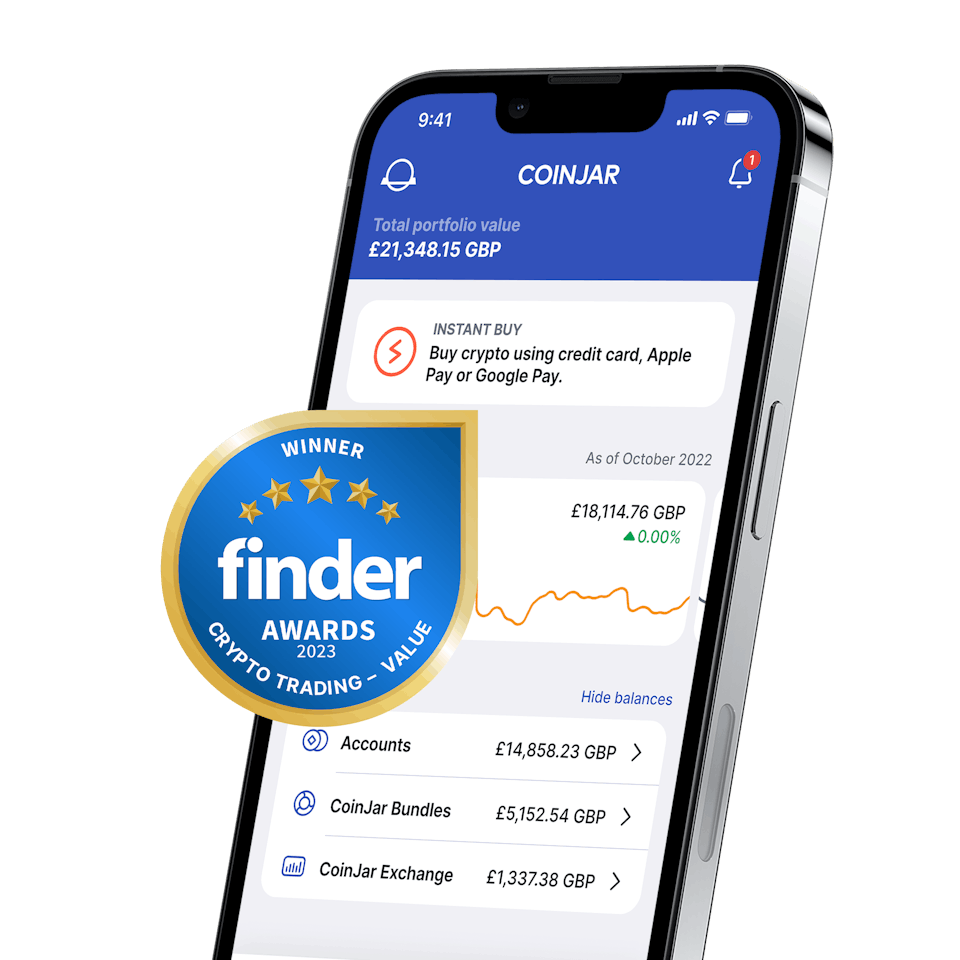Don’t invest unless you’re prepared to lose all the money you invest. This is a high‑risk investment and you should not expect to be protected if something goes wrong.
What is Alt Season? Understanding the Surge in Altcoin Prices
What is alt season? Find out how certain indicators can help you make more informed investing decisions.
In this article...
- Once you look past Bitcoin, you may find altcoins interesting
- There are a few things to know about altcoins
- This information can help you make more informed decisions.

Ever heard the term "alt season" in crypto circles or seen it trending on social media platforms? We are here to explain it. Understanding "alt season" can be a handy idea-generator for navigating the dynamic crypto market landscape.
What exactly is alt season?
Alt season refers to a period in the cryptocurrency market where (alternative cryptocurrencies to Bitcoin) experience significant price increases, possibly outperforming Bitcoin in terms of percentage gains.
This surge can last anywhere from weeks to months and sometimes follows or coincides with periods where in the market decreases.
Let’s just keep in mind that altcoins can have extreme price volatility. They can often experience rapid and unpredictable price fluctuations within short periods. And of course, due to their nature, the value of altcoins can be influenced by social media trends. Add to that celebrity endorsements, and other factors unrelated to traditional investment fundamentals and nothing is certain. That all said, here are things to keep an eye on.
Key characteristics of alt season
Increased altcoin market cap
Altcoins collectively see a , sometimes even surpassing Bitcoin's market cap growth.
Bitcoin dominance drops
The proportion of Bitcoin's market cap to the total crypto market cap falls, giving room for altcoins to rise.
Higher trading volumes
Altcoins see increased trading activity as investors shift their focus and capital from Bitcoin to these alternatives.
Why does alt season occur?
Several factors might trigger an .
Investor sentiment
After a period where Bitcoin has attracted most of the attention, investors might shift funds to seek higher returns from less explored altcoins.
Technological developments
New projects or significant updates in altcoins can suddenly make them more appealing.
Market maturity
As the crypto market matures, more investors look for diversification, leading to interest in altcoins.
How to prepare for alt season
If you're looking to capitalise on an upcoming alt season, there are a few ideas to keep in your head.
Research first. Dive deep into altcoin projects. Look for those with strong fundamentals, real-world utility, and active development teams.
Diversify your portfolio, be sure to spread your investments across various promising altcoins.
And of course read, read, read. Follow crypto news, join community discussions, and keep an eye on market trends. Platforms like CoinJar blog may offer insights.
Also keep in your thought bubble that altcoins can be more volatile. Never invest more than you're willing to lose, and consider setting orders.
Is it alt season right now?
Determining if it's currently alt season involves looking at Bitcoin's dominance, the performance of altcoins, and overall market sentiment.
Check Bitcoin's dominance. If it's decreasing, it could signal altcoins are on the rise. Look for consistent growth in altcoin prices and trading volumes.
What is altcoin season? Conclusion
Alt season offers a window of opportunity for crypto enthusiasts and investors to explore beyond Bitcoin. Understanding this cycle’s all time highs and all time lows can not only make your investment strategy more interesting but also enrich your grasp of the crypto market's dynamics.
Frequently Asked Questions
What is an altcoin season?
An altcoin season is a period in the cryptocurrency market when altcoins outperforms Bitcoin (BTC), leading to a decline in Bitcoin dominance. This means that the market share of altcoins increases relative to Bitcoin.
What factors indicate an altcoin season?
Several factors can suggest an impending or ongoing altcoin season:
Altcoins outperforms Bitcoin: This is the most direct indicator. When the altcoin performance is significantly better than Bitcoin's, it signals a shift in market focus.
Decline in Bitcoin dominance: As altcoins gain market share, Bitcoin's price may remain stable or even increase, but its overall dominance in the market decreases.
Increase in market capitalisation: The combined market capitalization of altcoins rises, indicating a larger influx of capital into these digital assets.
Bull market conditions: Altcoin seasons often occur during a broader bull market for cryptocurrencies, as investors become more willing to take on riskier assets.
What role do initial coin offerings (ICOs) and NFTs play in altcoin seasons?
Initial coin offerings (ICOs) and fungible tokens NFTs can contribute to the excitement and speculation that drive altcoin seasons.
Successful ICOs can launch new and innovative projects, attracting investment and increasing the overall market capitalisation of altcoins. Similarly, the popularity of NFTs can draw attention to specific altcoins associated with these digital assets.
How can I participate in an altcoin season?
To participate in an altcoin season, you can:
Research and invest in promising altcoins: Look for projects with strong fundamentals, innovative technology, and a dedicated community.
Use cryptocurrency exchanges: Cryptocurrency exchanges provide platforms for buying, selling, and trading various digital assets, including altcoins.
Monitor market trends: Stay informed about the overall market conditions and the performance of individual altcoins.
What are the risks of investing in altcoins during an altcoin season?
While altcoin seasons can offer significant profit potential, they also come with risks:
Volatility: Altcoins can be highly volatile, with prices fluctuating dramatically in short periods.
Speculation: Many altcoins are driven by speculation and hype, rather than underlying fundamentals.
Scams and fraud: The cryptocurrency market is susceptible to scams and fraudulent projects.
How long does an altcoin season typically last?
The duration of an altcoin season can vary, lasting from a few weeks to several months. It's important to monitor market trends and indicators to determine when the season might be ending.
How can I stay informed about altcoin seasons?
To stay informed about altcoin seasons, you can:
Follow cryptocurrency news websites and blogs.
Engage with the cryptocurrency community on social media platforms. Use market analysis tools and platforms.
Finder Awards Winner 2023
CRYPTO TRADING - VALUE

Suggested Articles
What is Bitcoin (BTC)? What is "Digital Gold" Used For?
What is Bitcoin? It is a digital currency that can be traded, exchanged, and used as a form of payment independent of central banks and governments.What is Ethereum? What is ETH Used For?
Ethereum is a decentralised blockchain-based open-source software platform that allows for the development of decentralised applications (dApps).What Is Crypto? How do Cryptocurrencies Work?
Crypto has become incredibly popular. But how does this digital currency work? And are there cryptos other than Bitcoin?Browse by topic



Cryptoassets traded on CoinJar UK Limited are largely unregulated in the UK, and you are unable to access the Financial Service Compensation Scheme or the Financial Ombudsman Service.
We use third party banking, safekeeping and payment providers, and the failure of any of these providers could also lead to a loss of your assets. We recommend you obtain financial advice before making a decision to use your credit card to purchase cryptoassets or to invest in cryptoassets. Capital Gains Tax may be payable on profits.
CoinJar’s digital currency exchange services are operated in the UK by CoinJar UK Limited (company number 8905988), registered by the Financial Conduct Authority as a Cryptoasset Exchange Provider and Custodian Wallet Provider in the United Kingdom under the Money Laundering, Terrorist Financing and Transfer of Funds (Information on the Payer) Regulations 2017, as amended (Firm Reference No. 928767).
Apple Pay and Apple Watch are trademarks of Apple Inc. Google Pay is a trademark of Google LLC.
This site is protected by reCAPTCHA and the and apply.